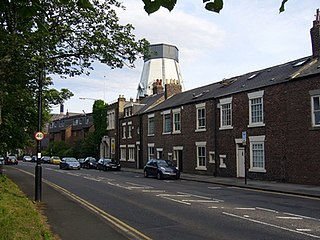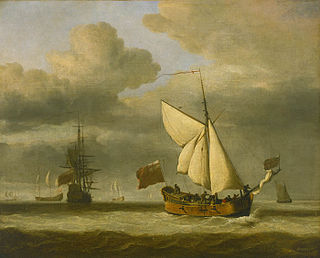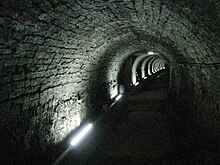
Blaydon is a town in the Metropolitan Borough of Gateshead, Tyne and Wear, England, and historically in County Durham. Blaydon, and neighbouring Winlaton, which Blaydon is now contiguous with, form the town of Blaydon-on-Tyne. The Blaydon/Winlaton ward had a population in 2011 of 13,896.

The Bowes Railway, built by George Stephenson in 1826, is the world's only operational preserved standard gauge cable railway system. It was built to transport coal from pits in Durham to boats on the River Tyne. The site is a scheduled monument. The railway is open every week on Thursday, Friday and Saturday as well as on a number of event days throughout the year.

The North Tyneside Steam Railway and Stephenson Steam Railway are visitor attractions in North Shields, North East England. The museum and railway workshops share a building on Middle Engine Lane adjacent to the Silverlink Retail Park. The railway is a standard gauge line, running south for 2 miles (3.2 km) from the museum to Percy Main. The railway is operated by the North Tyneside Steam Railway Association (NTSRA). The museum is managed by Tyne and Wear Archives and Museums on behalf of North Tyneside Council.

The history of Newcastle upon Tyne dates back almost 2,000 years, during which it has been controlled by the Romans, the Angles and the Norsemen amongst others. Newcastle upon Tyne was originally known by its Roman name Pons Aelius. The name "Newcastle" has been used since the Norman conquest of England. Due to its prime location on the River Tyne, the town developed greatly during the Middle Ages and it was to play a major role in the Industrial Revolution, being granted city status in 1882. Today, the city is a major retail, commercial and cultural centre.

Newburn is a village and district of Newcastle upon Tyne, in Tyne and Wear, England. Situated on the North bank of the River Tyne, it is built rising up the valley from the river. It is situated approximately 5 miles (8 km) from the city centre, 14 miles (23 km) east of Hexham and 13 miles (21 km) south south west of Morpeth. In the 2001 census, the population was given as 9,301, increasing to 9,536 at the 2011 Census. Newburn is in the Newcastle upon Tyne district of Tyne and Wear and is part of the parliamentary constituency of Newcastle upon Tyne North.

Fawdon is an electoral ward of Newcastle upon Tyne, in the county of Tyne and Wear, England. It is also close to the A1 western bypass. The population of the ward is 10,890, reducing to 10,090 at the 2011 Census, 5.7% of the total population of Newcastle upon Tyne. Car ownership in the area is 53.6%, lower than the city average of 54.7%. Until 1974 it was in Northumberland.

Byker is a district in the east of the city and metropolitan borough of Newcastle upon Tyne, in the county of Tyne and Wear, England. Home to the Byker Wall estate, made famous by TV series Byker Grove, Byker's population was recorded at 12,206 in the 2011 census. Byker is bordered by Heaton to the north and by Shieldfield to the north east. Until 1974 it was in Northumberland.
Hazlerigg is a village and civil parish north of the City of Newcastle upon Tyne in Tyne and Wear, England. It is about 5 miles (8.0 km) north of the city centre, on the A1. It is split between Newcastle upon Tyne and North Tyneside, each side of the A1 being a different district. The parish council administer the Newcastle side, whereas the area located in North Tyneside is unparished. Much of the Newcastle Great Park development is within the area administered by the Hazlerigg Parish Council. Located in the village is a post office, a fish & chip shop, a beauty salon, a hairdresser, a garage, a convenience store and a social club that is now open under new management. In spite of having a population of 1,053, and almost 800 homes, Hazlerigg has never had a pub. The population of the civil Parish taken at the 2011 Census was 980.

The Ouseburn is a small river in Newcastle upon Tyne, England that flows through the city into the River Tyne. It gives its name to the Ouseburn Valley and the Ouseburn electoral ward for Newcastle City Council elections.

Seaton Sluice is a village in Northumberland. It lies on the coast at the mouth of the Seaton Burn, midway between Whitley Bay and Blyth. In the 2021 census the village had a population of 2,956.

Spital Tongues is a district of Newcastle upon Tyne, located due north-west of the Newcastle City Centre. Its unusual name is believed to be derived from spital – a corruption of the word hospital, commonly found in British place names - and tongues, meaning outlying pieces of land. North of Spital Tongues is Leazes Park and the Town Moor.
The Ouseburn Valley is the name of the valley of the Ouseburn, a small tributary of the River Tyne, running southwards through the east of Newcastle upon Tyne, England. The name refers particularly to the urbanised lower valley, spanned by three impressive bridges, which is nowadays a cultural and social oasis close to the centre of Newcastle.

The Royal Victoria Infirmary (RVI) is a 673-bed tertiary referral hospital and research centre in Newcastle upon Tyne, England, with strong links to Newcastle University. The hospital is part of the Newcastle upon Tyne Hospitals NHS Foundation Trust and is a designated academic health science centre.

A collier is a bulk cargo ship designed or used to carry coal. Early evidence of coal being transported by sea includes use of coal in London in 1306. In the fourteenth and fifteenth centuries, coal was shipped from the River Tyne to London and other destinations. Other ports also exported coal – for instance the Old Quay in Whitehaven harbour was built in 1634 for the loading of coal. London became highly reliant on the delivery of coal by sea – Samuel Pepys expressed concern in the winter of 1666–67 that war with the Dutch would prevent a fleet of 200 colliers getting through. In 1795, 4,395 cargoes of coal were delivered to London. By 1824, this number had risen to about 7,000; by 1839, it was over 9,000. The trade continued to the end of the twentieth century, with the last cargo of coal leaving the Port of Tyne in February, 2021.

Newcastle City Centre is the city centre district of Newcastle upon Tyne, England. It is the historical heart of the city and serves as the main cultural and commercial centre of the North East England region. The city centre forms the core of the Tyneside conurbation.
Seaton Burn is a village in North Tyneside, Tyne and Wear, to the north of Newcastle upon Tyne, and adjacent to Wideopen which is just south of it. It is part of the wider Seaton valley in which some Seaton villages are in Northumberland, and others in North Tyneside, Tyne and Wear. This is because the area lies on the border between the two counties.
Derwenthaugh Coke Works was a coking plant on the River Derwent near Swalwell in Gateshead. The works were built in 1928 on the site of the Crowley's Iron Works, which had at one time been the largest iron works in Europe. The coke works was closed and demolished in the late 1980s, and replaced by Derwenthaugh Park.

The Fawdon Wagonway was from 1818 to 1826 a 1 mile 3 furlongs (2.2 km) long horse-drawn and partially rope-operated industrial railway in Fawdon near Newcastle upon Tyne. It was the first cable car employing a moving rope that could be picked up or released by a grip on the cars.

The Seaton Burn Wagonway was from 1826 to 1920 a partially horse-drawn and partially rope-operated industrial railway with a gauge of 4 ft 6 in near Newcastle upon Tyne.

Monument is an electoral ward and area of Newcastle upon Tyne. It was established as an electoral ward in 2018. It takes its name from Grey's Monument. It replaced most of Westgate ward, parts of South Jesmond and some of Ouseburn.


















